 Facebook
Facebook
 X
X
 Instagram
Instagram
 TikTok
TikTok
 Youtube
Youtube
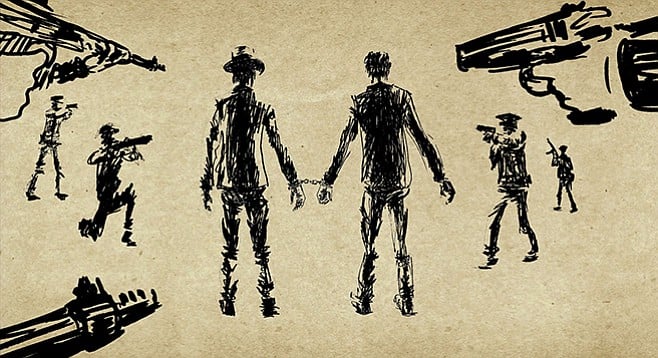
“Goy” is the Yiddish term for non-Jew. Like “gringo,” which means “American,” it’s not derogatory. But when Joyce Axelrod, mother of the Jewish Short Film Festival, told me about Randall Christopher’s movie on the Holocaust, the first thing she brought up was the fact that he was a goy.
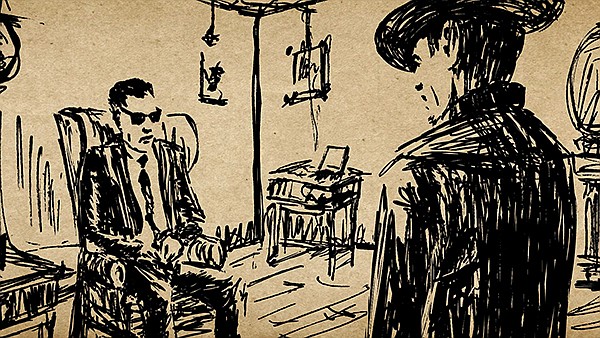
“Well, he’s not Jewish,” she began, “but his film is in the festival.”
Granted, it’s a bit of a curiosity—why would a person who isn’t Jewish make a film about the Holocaust? Furthermore, why would a non-Jewish person spend $15,000 of his own savings to make a movie about a Nazi war criminal?
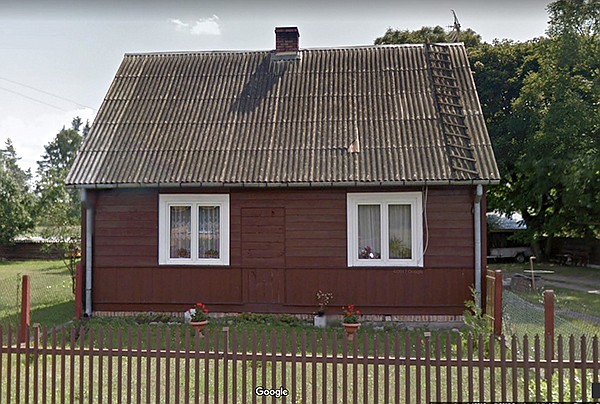
“I’m no expert on the subject,” Christopher admitted, “I’m no historian, I’m an illustrator with two art degrees. But I am now very much an expert on ignorance of the Holocaust.”
The Driver is Red tells the story of the spy tactics employed by Israeli intelligence agency Mossad when they went to Argentina to capture Nazi Adolf Eichmann in 1960. Done in pen-and-ink, the animated short is an intimate look at the efforts of agent Zvi Aharoni, a German-born Jew who at 18 escaped with his mother and brother on one of the last trains out of Germany before World War II.
It all started in the place where Christopher, an animator and local art teacher, spends much of his time: Influx Café on Broadway in Golden Hill. There, in January 2016, he read a brief article in the New York Times about a letter the condemned Eichmann had written to the president of Israel in 1962, begging for clemency. The news wasn’t new, but the hand-written letter had just been rediscovered in the current Israeli president’s files during a digitization project.
The story haunted Christopher’s imagination. He sat in the front window at Influx, Googling. His search turned up the international news of Eichmann’s capture, trial, and execution—something he had not come across in his education…or in his life.
Christopher grew up in Orlando, where he doesn’t remember knowing anyone who he was aware was Jewish or even part Jewish, and he didn’t encounter any Jewish culture. Nor any anti-Semitism, for that matter.
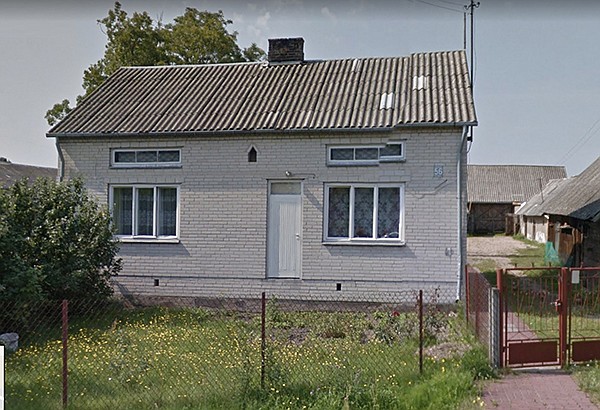
“We learned about ‘concentration camps,’” Christopher remembered. “That’s not the right word, it didn’t register. It sounded like it was somehow part of the war effort, like a POW camp where conditions got worse, not a dedicated facility for killing people.”
“They need to call them ‘murder factories.’ Built from the ground up, just to kill people.”
“I feel so dumb, so ignorant, being an adult in America and not knowing the history of it.”
Eichmann was Hitler’s logistics guy: he managed the mass deportation of Jews to ghettos and extermination camps from German-occupied Eastern European countries during World War II. After the fall of Hitler he escaped American capture and eventually fled to Argentina, where he hid his identity and sent for his family. He worked for Mercedes-Benz and built a house in a suburb of Buenos Aires, living under the name Ricardo Klement.
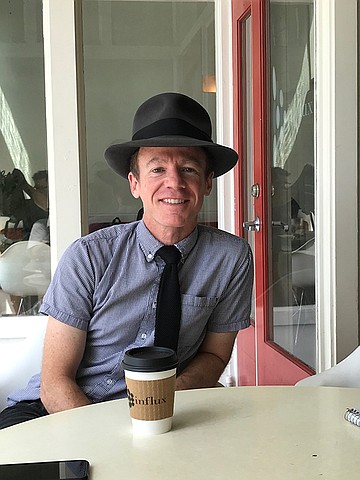
“My friends, people I told this story to, they were fascinated. They would start listening very carefully when I started to talk about this Nazi from Germany that was found 15 years after the war, halfway around the world. They didn’t know anything about it. That’s how I knew I was on to something.”
“I wasn’t thinking of making a film.”
22 awards later, Christopher reflected on the process over coffee at Influx.
“I was sitting over there,” he pointed to another table, “watching films of Hitler’s speeches. It hit me how real this was, how this guy was elected, how this happened in a society with the roots of democratic ideology.”
“For me, I am interested in how something like this happened in Western, in Christian, in so-called enlightened culture. My culture.”
“If I hadn’t started doing this research, I wouldn’t have picked up on the similarities between what Hitler said to get elected and what Trump said, about jobs and making the country great again.”
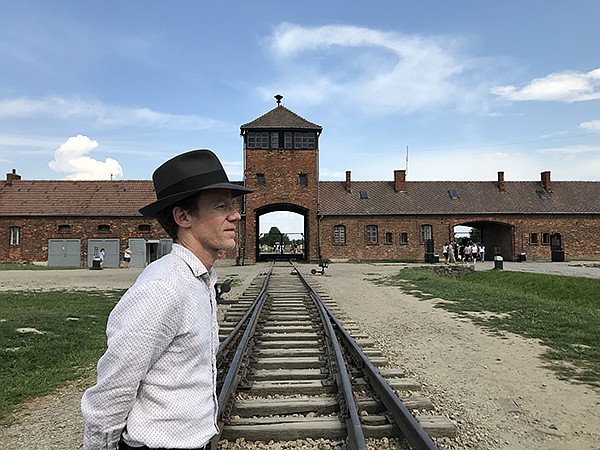
“I started drawing.”
Previous to the film about Eichmann, Christopher’s animations are cute and funny. There’s two skater dudes squabbling with a grumpy dog to retrieve their boards, and a decidedly overactive cat.
Some might know Christopher as the curly-locked lead doodler of Sketch Party at the Whistle Stop, where he covered the tables in butcher paper and let artists go to town while drinking pints. At 46, with a close-cropped cut and a mature fedora, the illustrator has taken on a somber topic. But The Driver is Red isn’t without that certain charm that comes with sketch art. The simple medium makes the topic accessible and the content poignant.
Christopher said he couldn’t stop thinking about the moment when Aharoni saw Eichmann get off the bus in the remote Argentinian town the Mossad agent had traced him to. More than a decade later, thousands of miles from the scene of the crime, there stood the man who had so methodically arranged the deaths of so many.
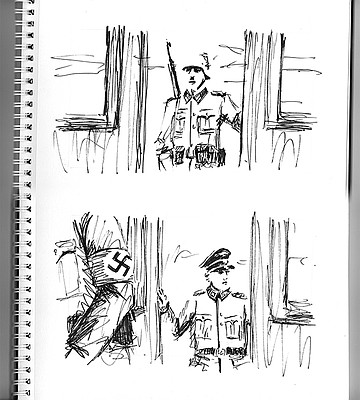
The clue to the Nazi’s whereabouts came from a blind man whose daughter dated Eichmann’s son. The film’s title alludes to the coded telegram Aharoni sent back to Israel to confirm that he had indeed found Adolf Eichmann, in Nazi-sympathetic Argentina. The film follows the elaborate plan to track and kidnap the man so he could stand trial in Israel.
The Israeli intelligence officers each assumed fake identities and traveled separately to other countries first, then to Argentina. The plan was to snatch Klement/Eichmann after he got off the bus, put him in a car, and drive him to a safe house. Then they would fly him out. The guys actually pulled it off, with minimal hitches. After an unexpected delay and a struggle they captured Eichmann near his bus stop and forced him into the car. They hid him under a blanket. For real.
In his book, agent Aharoni recalls the moment when Eichmann first spoke to his captors—“in perfect German”—from under the blanket. There they were, up close and personal in the back seat of a car with the architect of Hitler’s “Final Solution.”
Pinter’s humble narration conveys the intimacy of the scene, while spare yet urgent music brings drama.
“’I have already resigned myself to my fate,’” Eichmann told the Mossad agents as they drove him away in a car with diplomatic plates, to evade police.
The Israeli spies managed to get their prisoner out of the country in one piece, “healthy enough to stand trial,” as the plan required.
But apparently he was bluffing about being ready to meet his fate. While he awaited execution after his trial in Israel, Eichmann wrote to the Israeli president that “The judges made a fundamental mistake in their judgment of me, because they are not able to empathize with the time and situation in which I found myself during the war years.
“It is not true that I was personally of such a high rank as to be able to persecute, or that I myself was a persecutor in the pursuit of the Jews, in the face of such an abundant rule it is clear the judges in their ruling ignored the fact that I never served in such a high position as required to be involved independently in such decisive responsibilities. Nor did I give any order in my own name, but only ever acted ‘by order of.’”
Christopher chose simple pen-and-ink to convey the tone of a historical narrative, and also for a more practical reason: money. He had no funding and no way to compensate an artist, if he wanted to hire one.
But as the animation took shape in his notebooks, Christopher realized that his own humble line sketches would be an appropriate way to follow the story without using distracting visuals.
He began sharing the work, at Influx, of course.
“I was talking to a friend about how I would never be able to find—and hire—a voice actor to do [Mossad agent] Zvi Aharoni in the film.”
“Then I felt a tap on my shoulder.”
Christopher turned around to find that the head playwright for San Diego Repertory Theater, Herbert Siguenza, had overheard his conversation. That led to a meeting with Mark Pinter, a veteran New York actor of local Old Globe fame. Pinter narrates the film with a charming German-Hebrew hybrid accent that sounds like a friendly foreign neighbor. Except he’s a badass spy who speaks five languages and captured a Nazi war criminal.
Christopher was fascinated by the irony of the fact that Aharoni was a German whose father had fought for Germany in World War I. The Mossad agent spoke perfect German and had grown up with Brahms and Beethoven. Aharoni was at home in German culture and then barely escaped the Nazis with his life.
Pinter’s fatherly portrayal of the spy is apt: agent Aharoni lived out his life, to age 91, somewhat anonymously in Devon, England, where he was a grandfather who could be found flipping burgers at local fundraisers.
When he was a child in the early 1960s, Mark Pinter and his family had watched Eichmann’s trial on television. It was international news, shared with the world by Israeli courts. On his paper route, ten-year-old Pinter followed the story of Eichmann’s demise as it unfolded.
“I was a news junkie at an early age,” Pinter said. “I vividly recall the headline in the Des Moines Register that morning regarding Eichmann’s capture.”
When he learned about the project, Pinter offered his voice to narrate Christopher’s film.
“How much is this gonna cost me?” Christopher wondered to himself, as he assented eagerly to Pinter’s role.
With no financial support, Christopher had the project on the back burner. Then Mark Pinter sent him an email asking about progress on the Eichmann film.
“This movie needs to get made,” Pinter encouraged.
“He basically said that if I didn’t have any money it was okay,” Randall said.
Before he started working with Christopher on the film, the actor “had no idea of the intricate logistical details of the capture, nor the secrecy with which the plan was carried out.”
But for the actor and the animator alike, education was the impetus.
“What strikes those of us who worked with Randall on this project is how very little knowledge of the Holocaust is known to young people today,” Pinter said.
That’s the major motivation for Randall. He encounters Holocaust ignorance frequently in his de-facto role as a person who now fields questions about the topic. His own included.
“That, and how timely the film is,” Pinter continued. I believe the film resonates loudly with audiences because they recognize the fragility of rights and freedoms we’ve taken for granted—and how quickly those things can become restricted—or taken from us altogether.”
Later Randall worked with composer and friend, Spencer Rabin, to conceive the score. Rabin grew up in a Jewish family and knew quite a bit of Holocaust history, but he was incredulous until the film was released and he “started to realize how little people knew about the Nazi regime.”
Stephen Schindler, son of local 88 year-old Holocaust survivor Rose Schindler, was also glad to find a goy on the case.
“He was super excited that I wasn’t Jewish. He basically told me, ‘if it’s up to us to save ourselves, we’re f----ed.’”
Christopher staged a live reading of the script at Verbatim books in 2016. The violinist from local band Album Leaf improvised accompaniment to the reading, and afterwards Rose Schindler talked about her experiences to a packed audience.
“People were tripping,” Christopher said.
“There’s three lines about Treblinka in the film, and this Nazi war criminal, and then they see someone there, with the tattoo on her arm, in front of them, who experienced this firsthand.”
For the European premiere of the film at the Krakow Film Festival in May of this year, Christopher traveled to Poland. The content of his film attracted attention from the Forum for Dialogue, an organization working to connect modern Poland with its Jewish history.
“It was a $4 one-hour bus ride to Auschwitz,” Christopher said.
So he went. On another day trip he drove with historian Waclaw Wojciechowski to Treblinka. Also not Jewish, Waclaw has been giving Holocaust history tours since the 1970s. On the way, the guide pointed out a typical practice of Polish townspeople, some of whom had participated in wiping out the country’s Jewish population during the war.
Christopher called it “the mystery of the front doors.”
“’Polish people were traditionally farmers,’” the tour guide explained, “’so they would enter their houses from the fields, by the back door. Polish houses don’t have front doors.’”
But Jews who lived in the village for decades before WWII were not farmers—they were tailors, merchants, lawyers, or other professions that required customers enter by the front door. So Jewish houses had front doors.
With the deportation of Jews, people began to disappear from towns all over Poland. Some villagers took it upon themselves to murder their Jewish neighbors and take their land, such as what happened in Jedwabne. But homes that previously belonged to Jewish families were not destroyed. Neighbors overtook the homes, with no effort to hide the fact that the prior inhabitants had been killed or forced out. To this day, front doors that haven’t been used in 70 years still remain, obscured by time and disuse. They might be completely overlooked or just a curiosity to an average passer-by, but for those who have taken the time to learn the story, the old doors provide a ghostly fading memory of the Jewish families who perished at the hands of their neighbors.
“It’s a physical erasing of Jewish history,” Christopher said. “Which makes it even more important to make a film like this.”
Before the film got in to the Sundance festival and he attended a brunch with Robert Redford, Randall had about twenty-five rejections under his belt. San Diego Film Festival didn’t want it.
Doc NYC was his first big win, but “Aspen was the turning point,” Christopher said. There the film picked up Best Documentary Short and Audience Award Best Short Film at Aspen Shortsfest in April 2018. Fast forward through a whirlwind of festivals to August, when the HollyShorts jury awarded Best Director to an animated film for the first time.
Despite national and international attention, Christopher hadn’t lined up a San Diego premiere for the film—until Joyce Axelrod’s Jewish short film festival. Well-known Golden Hill neighbor Lew Klein, active in the Jewish community, met Randall at Influx and encouraged him to get in touch with Joyce. She was preparing to host the first Jewish short film festival in the world here in San Diego. Lew has since passed away, but the first hometown screening of The Driver is Red on October 7 will be dedicated to him.
The film’s “homecoming” coincides with the release of Operation Finale, a full-length feature about Eichmann’s capture. Ben Kingsley plays Klement/Eichmann. But, Christopher said, distortions and embellishments of the story are rampant in the movie, due to the fact that it’s based on a book by a Mossad agent who wasn’t too friendly with Zvi Aharoni.
San Diego Film Festival came around and will screen The Driver is Red on October 12. It will show at Coronado Island Film Festival in November. Christopher plans to find a place to post it online for free to share with as many people as possible.


“Goy” is the Yiddish term for non-Jew. Like “gringo,” which means “American,” it’s not derogatory. But when Joyce Axelrod, mother of the Jewish Short Film Festival, told me about Randall Christopher’s movie on the Holocaust, the first thing she brought up was the fact that he was a goy.

“Well, he’s not Jewish,” she began, “but his film is in the festival.”
Granted, it’s a bit of a curiosity—why would a person who isn’t Jewish make a film about the Holocaust? Furthermore, why would a non-Jewish person spend $15,000 of his own savings to make a movie about a Nazi war criminal?

“I’m no expert on the subject,” Christopher admitted, “I’m no historian, I’m an illustrator with two art degrees. But I am now very much an expert on ignorance of the Holocaust.”
The Driver is Red tells the story of the spy tactics employed by Israeli intelligence agency Mossad when they went to Argentina to capture Nazi Adolf Eichmann in 1960. Done in pen-and-ink, the animated short is an intimate look at the efforts of agent Zvi Aharoni, a German-born Jew who at 18 escaped with his mother and brother on one of the last trains out of Germany before World War II.
It all started in the place where Christopher, an animator and local art teacher, spends much of his time: Influx Café on Broadway in Golden Hill. There, in January 2016, he read a brief article in the New York Times about a letter the condemned Eichmann had written to the president of Israel in 1962, begging for clemency. The news wasn’t new, but the hand-written letter had just been rediscovered in the current Israeli president’s files during a digitization project.
The story haunted Christopher’s imagination. He sat in the front window at Influx, Googling. His search turned up the international news of Eichmann’s capture, trial, and execution—something he had not come across in his education…or in his life.
Christopher grew up in Orlando, where he doesn’t remember knowing anyone who he was aware was Jewish or even part Jewish, and he didn’t encounter any Jewish culture. Nor any anti-Semitism, for that matter.

“We learned about ‘concentration camps,’” Christopher remembered. “That’s not the right word, it didn’t register. It sounded like it was somehow part of the war effort, like a POW camp where conditions got worse, not a dedicated facility for killing people.”
“They need to call them ‘murder factories.’ Built from the ground up, just to kill people.”
“I feel so dumb, so ignorant, being an adult in America and not knowing the history of it.”
Eichmann was Hitler’s logistics guy: he managed the mass deportation of Jews to ghettos and extermination camps from German-occupied Eastern European countries during World War II. After the fall of Hitler he escaped American capture and eventually fled to Argentina, where he hid his identity and sent for his family. He worked for Mercedes-Benz and built a house in a suburb of Buenos Aires, living under the name Ricardo Klement.

“My friends, people I told this story to, they were fascinated. They would start listening very carefully when I started to talk about this Nazi from Germany that was found 15 years after the war, halfway around the world. They didn’t know anything about it. That’s how I knew I was on to something.”
“I wasn’t thinking of making a film.”
22 awards later, Christopher reflected on the process over coffee at Influx.
“I was sitting over there,” he pointed to another table, “watching films of Hitler’s speeches. It hit me how real this was, how this guy was elected, how this happened in a society with the roots of democratic ideology.”
“For me, I am interested in how something like this happened in Western, in Christian, in so-called enlightened culture. My culture.”
“If I hadn’t started doing this research, I wouldn’t have picked up on the similarities between what Hitler said to get elected and what Trump said, about jobs and making the country great again.”

“I started drawing.”
Previous to the film about Eichmann, Christopher’s animations are cute and funny. There’s two skater dudes squabbling with a grumpy dog to retrieve their boards, and a decidedly overactive cat.
Some might know Christopher as the curly-locked lead doodler of Sketch Party at the Whistle Stop, where he covered the tables in butcher paper and let artists go to town while drinking pints. At 46, with a close-cropped cut and a mature fedora, the illustrator has taken on a somber topic. But The Driver is Red isn’t without that certain charm that comes with sketch art. The simple medium makes the topic accessible and the content poignant.
Christopher said he couldn’t stop thinking about the moment when Aharoni saw Eichmann get off the bus in the remote Argentinian town the Mossad agent had traced him to. More than a decade later, thousands of miles from the scene of the crime, there stood the man who had so methodically arranged the deaths of so many.

The clue to the Nazi’s whereabouts came from a blind man whose daughter dated Eichmann’s son. The film’s title alludes to the coded telegram Aharoni sent back to Israel to confirm that he had indeed found Adolf Eichmann, in Nazi-sympathetic Argentina. The film follows the elaborate plan to track and kidnap the man so he could stand trial in Israel.
The Israeli intelligence officers each assumed fake identities and traveled separately to other countries first, then to Argentina. The plan was to snatch Klement/Eichmann after he got off the bus, put him in a car, and drive him to a safe house. Then they would fly him out. The guys actually pulled it off, with minimal hitches. After an unexpected delay and a struggle they captured Eichmann near his bus stop and forced him into the car. They hid him under a blanket. For real.
In his book, agent Aharoni recalls the moment when Eichmann first spoke to his captors—“in perfect German”—from under the blanket. There they were, up close and personal in the back seat of a car with the architect of Hitler’s “Final Solution.”
Pinter’s humble narration conveys the intimacy of the scene, while spare yet urgent music brings drama.
“’I have already resigned myself to my fate,’” Eichmann told the Mossad agents as they drove him away in a car with diplomatic plates, to evade police.
The Israeli spies managed to get their prisoner out of the country in one piece, “healthy enough to stand trial,” as the plan required.
But apparently he was bluffing about being ready to meet his fate. While he awaited execution after his trial in Israel, Eichmann wrote to the Israeli president that “The judges made a fundamental mistake in their judgment of me, because they are not able to empathize with the time and situation in which I found myself during the war years.
“It is not true that I was personally of such a high rank as to be able to persecute, or that I myself was a persecutor in the pursuit of the Jews, in the face of such an abundant rule it is clear the judges in their ruling ignored the fact that I never served in such a high position as required to be involved independently in such decisive responsibilities. Nor did I give any order in my own name, but only ever acted ‘by order of.’”
Christopher chose simple pen-and-ink to convey the tone of a historical narrative, and also for a more practical reason: money. He had no funding and no way to compensate an artist, if he wanted to hire one.
But as the animation took shape in his notebooks, Christopher realized that his own humble line sketches would be an appropriate way to follow the story without using distracting visuals.
He began sharing the work, at Influx, of course.
“I was talking to a friend about how I would never be able to find—and hire—a voice actor to do [Mossad agent] Zvi Aharoni in the film.”
“Then I felt a tap on my shoulder.”
Christopher turned around to find that the head playwright for San Diego Repertory Theater, Herbert Siguenza, had overheard his conversation. That led to a meeting with Mark Pinter, a veteran New York actor of local Old Globe fame. Pinter narrates the film with a charming German-Hebrew hybrid accent that sounds like a friendly foreign neighbor. Except he’s a badass spy who speaks five languages and captured a Nazi war criminal.
Christopher was fascinated by the irony of the fact that Aharoni was a German whose father had fought for Germany in World War I. The Mossad agent spoke perfect German and had grown up with Brahms and Beethoven. Aharoni was at home in German culture and then barely escaped the Nazis with his life.
Pinter’s fatherly portrayal of the spy is apt: agent Aharoni lived out his life, to age 91, somewhat anonymously in Devon, England, where he was a grandfather who could be found flipping burgers at local fundraisers.
When he was a child in the early 1960s, Mark Pinter and his family had watched Eichmann’s trial on television. It was international news, shared with the world by Israeli courts. On his paper route, ten-year-old Pinter followed the story of Eichmann’s demise as it unfolded.
“I was a news junkie at an early age,” Pinter said. “I vividly recall the headline in the Des Moines Register that morning regarding Eichmann’s capture.”
When he learned about the project, Pinter offered his voice to narrate Christopher’s film.
“How much is this gonna cost me?” Christopher wondered to himself, as he assented eagerly to Pinter’s role.
With no financial support, Christopher had the project on the back burner. Then Mark Pinter sent him an email asking about progress on the Eichmann film.
“This movie needs to get made,” Pinter encouraged.
“He basically said that if I didn’t have any money it was okay,” Randall said.
Before he started working with Christopher on the film, the actor “had no idea of the intricate logistical details of the capture, nor the secrecy with which the plan was carried out.”
But for the actor and the animator alike, education was the impetus.
“What strikes those of us who worked with Randall on this project is how very little knowledge of the Holocaust is known to young people today,” Pinter said.
That’s the major motivation for Randall. He encounters Holocaust ignorance frequently in his de-facto role as a person who now fields questions about the topic. His own included.
“That, and how timely the film is,” Pinter continued. I believe the film resonates loudly with audiences because they recognize the fragility of rights and freedoms we’ve taken for granted—and how quickly those things can become restricted—or taken from us altogether.”
Later Randall worked with composer and friend, Spencer Rabin, to conceive the score. Rabin grew up in a Jewish family and knew quite a bit of Holocaust history, but he was incredulous until the film was released and he “started to realize how little people knew about the Nazi regime.”
Stephen Schindler, son of local 88 year-old Holocaust survivor Rose Schindler, was also glad to find a goy on the case.
“He was super excited that I wasn’t Jewish. He basically told me, ‘if it’s up to us to save ourselves, we’re f----ed.’”
Christopher staged a live reading of the script at Verbatim books in 2016. The violinist from local band Album Leaf improvised accompaniment to the reading, and afterwards Rose Schindler talked about her experiences to a packed audience.
“People were tripping,” Christopher said.
“There’s three lines about Treblinka in the film, and this Nazi war criminal, and then they see someone there, with the tattoo on her arm, in front of them, who experienced this firsthand.”
For the European premiere of the film at the Krakow Film Festival in May of this year, Christopher traveled to Poland. The content of his film attracted attention from the Forum for Dialogue, an organization working to connect modern Poland with its Jewish history.
“It was a $4 one-hour bus ride to Auschwitz,” Christopher said.
So he went. On another day trip he drove with historian Waclaw Wojciechowski to Treblinka. Also not Jewish, Waclaw has been giving Holocaust history tours since the 1970s. On the way, the guide pointed out a typical practice of Polish townspeople, some of whom had participated in wiping out the country’s Jewish population during the war.
Christopher called it “the mystery of the front doors.”
“’Polish people were traditionally farmers,’” the tour guide explained, “’so they would enter their houses from the fields, by the back door. Polish houses don’t have front doors.’”
But Jews who lived in the village for decades before WWII were not farmers—they were tailors, merchants, lawyers, or other professions that required customers enter by the front door. So Jewish houses had front doors.
With the deportation of Jews, people began to disappear from towns all over Poland. Some villagers took it upon themselves to murder their Jewish neighbors and take their land, such as what happened in Jedwabne. But homes that previously belonged to Jewish families were not destroyed. Neighbors overtook the homes, with no effort to hide the fact that the prior inhabitants had been killed or forced out. To this day, front doors that haven’t been used in 70 years still remain, obscured by time and disuse. They might be completely overlooked or just a curiosity to an average passer-by, but for those who have taken the time to learn the story, the old doors provide a ghostly fading memory of the Jewish families who perished at the hands of their neighbors.
“It’s a physical erasing of Jewish history,” Christopher said. “Which makes it even more important to make a film like this.”
Before the film got in to the Sundance festival and he attended a brunch with Robert Redford, Randall had about twenty-five rejections under his belt. San Diego Film Festival didn’t want it.
Doc NYC was his first big win, but “Aspen was the turning point,” Christopher said. There the film picked up Best Documentary Short and Audience Award Best Short Film at Aspen Shortsfest in April 2018. Fast forward through a whirlwind of festivals to August, when the HollyShorts jury awarded Best Director to an animated film for the first time.
Despite national and international attention, Christopher hadn’t lined up a San Diego premiere for the film—until Joyce Axelrod’s Jewish short film festival. Well-known Golden Hill neighbor Lew Klein, active in the Jewish community, met Randall at Influx and encouraged him to get in touch with Joyce. She was preparing to host the first Jewish short film festival in the world here in San Diego. Lew has since passed away, but the first hometown screening of The Driver is Red on October 7 will be dedicated to him.
The film’s “homecoming” coincides with the release of Operation Finale, a full-length feature about Eichmann’s capture. Ben Kingsley plays Klement/Eichmann. But, Christopher said, distortions and embellishments of the story are rampant in the movie, due to the fact that it’s based on a book by a Mossad agent who wasn’t too friendly with Zvi Aharoni.
San Diego Film Festival came around and will screen The Driver is Red on October 12. It will show at Coronado Island Film Festival in November. Christopher plans to find a place to post it online for free to share with as many people as possible.
Comments